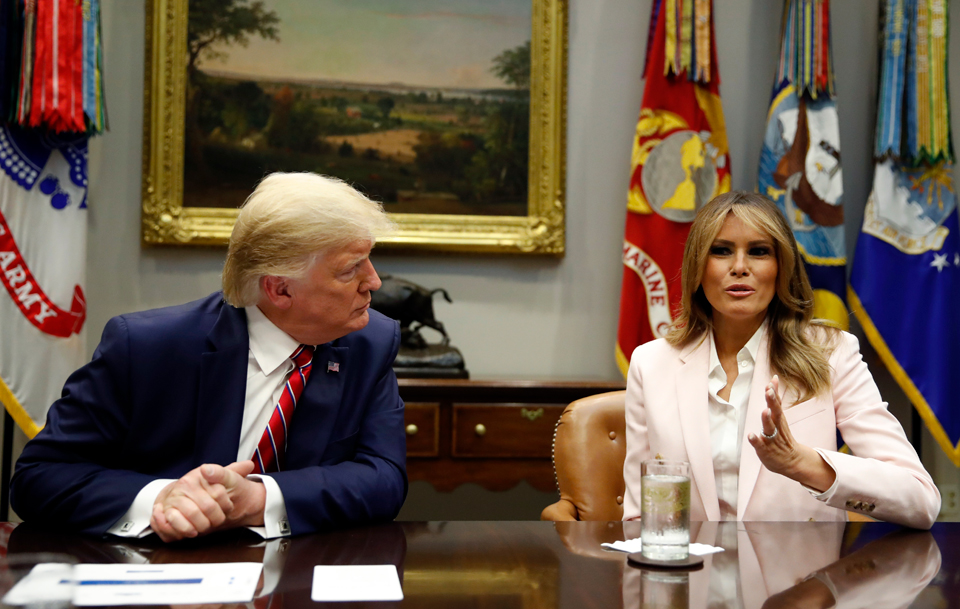
The U.S. opioid crisis has disproportionately impacted white people. This fact has shaped public responses to the crisis and reveals deep-rooted racism.
First, the tragedy of this loss of life, most focused on working-class people, is devastating and deserves careful and compassionate responses. The crisis demands serious reforms in the healthcare complex, approaches to medicine, and significant changes in how we treat people who have been over-worked and have seen their bodies devastated as a result.
According to data compiled by the Kaiser Family Foundation, white people disproportionately suffered 80% of the total 47,000 reported deaths due to opioid overdoses in 2017. The number ticked up slightly in 2018. And according to analysis in People’s World, more than 200,000 people have died due to overdoses since 1996.
The Journal of the American Medical Association—Internal Medicine recently found that doctors over-prescribe opioids for low-income white people. This study compared population data and racially-segregated geographical locations with opioid prescriptions. It concluded that “the current opioid crisis is largely found among lower-income and majority-white communities.” In some overwhelmingly white communities in California between 2011 and 2015, for example, nearly one-fourth of persons over 15 years of age had more than one prescription for certain types of opioid painkillers.
These researchers pointed to structural changes in the healthcare system after the implementation of “Obamacare” as the cause of this racially-inflected pattern.
Historical data, however, reveals that these changes only tell part of the story. In 2001, a Republican-controlled Congress bowed to pressure from powerful pharmaceutical companies and declared “pain” as the “fifth vital sign.” It mandated that healthcare professionals routinely ask patients about pain in all healthcare interactions.
This new emphasis on pain management opened the door to the current over-prescription of highly potent and addictive opioids for newly discovered levels of pain. Researchers also found that even though white patients are known to be more likely to abuse pain-killing drugs, doctors continue to over-prescribe opioids for them.
Part of the reason for this situation has to do with how the U.S. health system works. It measures success by profit margins rather than quality medical outcomes. As a result, low-income white patients receive easy access to opioids rather than more substantive medical treatment related to changes in diet, exercise, life-work balances, and long-term therapies. Pain killers are cheaper than sustained care or education in healthy living.
A significant part of the population that has gotten easy access to prescribed opioids are slightly older than middle-aged working-class people. These are people who have worked a long time in jobs in industry and service that demand excessive physical activity. Years of over-work producing surplus value for corporations and businesses inevitably take a toll on the human body, making pain a permanent feature of life for so many people. Drug companies sought a profitable and quick fix that has killed thousands and harmed so many more.
Corporations like Purdue Pharma and Insys Therapeutics, which manufacture opioids on a massive scale, swam in new sources of revenue since the alterations in medical policies were put into law.
Ironically, racist bias against African-American and Latinx patients, which led doctors and providers to largely ignore their reports of pain at far higher rates than whites, may have allowed those communities to avoid the worst effects of opioid addiction and abuse. Recent research points to implicit and overt biases by doctors and other practitioners against racially minoritized patients as a cause of major disparities in how patients are treated. Public health researcher Jana Morrissey found that “[r]acial/ethnic minorities consistently receive less adequate treatment for acute and chronic pain than non-Hispanic whites, even after controlling for age, gender, and pain intensity.”
Still, as addiction and a wave of deaths among whites became widely evident, public officials adopted medical and community-oriented approaches that differed sharply from the past.
Most public health officials and politicians have used particular language to discuss the crisis. They label it as an “epidemic” that requires careful medical responses. Using similar discourse, the Trump administration, beginning in 2018, ordered the creation of and support for existing health programs that aid people “struggling with addiction.”
A White House video, featuring First Lady Melania Trump, calls the current wave of opioid addiction “the worst drug crisis in American history.” In a concerned tone, she describes addiction as an “illness” that deserves sympathy and a collective effort to overcome. The Trump administration’s plan has emphasized understanding and compassion in dealing with the crisis.
The response to the opioid crisis today contrasts sharply with the Nixon administration’s response to drug abuse in 1971. Nixon identified drugs as “enemy number one,” and called for a “war on drugs” that emphasized a law enforcement-based approach to “fighting” drug abuse and addiction. Many critics saw his policy as a racially-coded appeal to white voters by singling out African-American communities as potentially criminal, deserving a violent response from the government.
In 1986, the Reagan administration followed up with new laws that targeted African-American communities with militarized policing and long, mandatory sentences for possession of crack cocaine. Officials and the mainstream media identified crack specifically with African-American communities.
Crack is a form of cocaine––the preferred drug of wealthy whites––but the possession or use of even small amounts of crack could earn a person a prison sentence 100 times longer than one for cocaine possession in much larger quantities. In other words, drugs associated with Black communities earned users much harsher punishments than possession of drugs linked to whites.
Such a racist disparity in sentencing resulted in skyrocketing rates of imprisonment for African Americans, stimulating a boom for the growing private prison industry. Today, the U.S. has the largest imprisoned population of any country in the world.
In 2009, the Obama administration attempted to alter sentencing disparities by adjusting federal guidelines. He convinced Congress to accept new guidelines that reduced the gap from a 100:1 to a 10:1 ratio in sentencing disparities between crack and cocaine crimes. Congressional Republicans resisted this compromise, preferring to see the original disparities remain intact.
Upon entering office, the Trump administration resorted to the same “war on drugs” language of past Republican administrations to undo the new guidelines, reinstalling racist disparities.
Trump’s response to the opioid crisis, however, differs sharply from his policies on crack. This comparison of drug policies reveals the administration’s attitudes about the people who are linked to those drugs. As Human Rights Watch reports, “Race [is] the lens through which drug problems in the United States were viewed, coloring both the definition of the problem and the proposed solutions.” Trump expects Americans to express compassion for white people’s problems but to treat people of color as dangerous criminals.












Comments